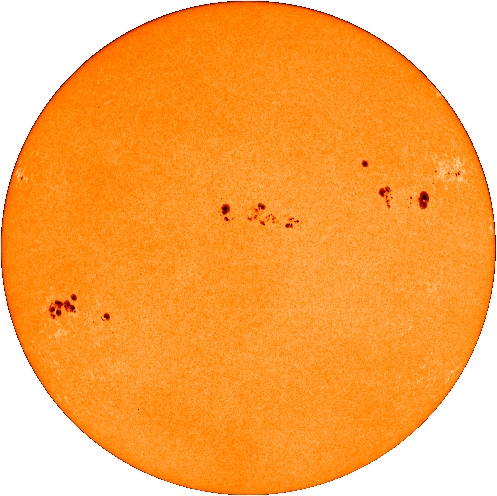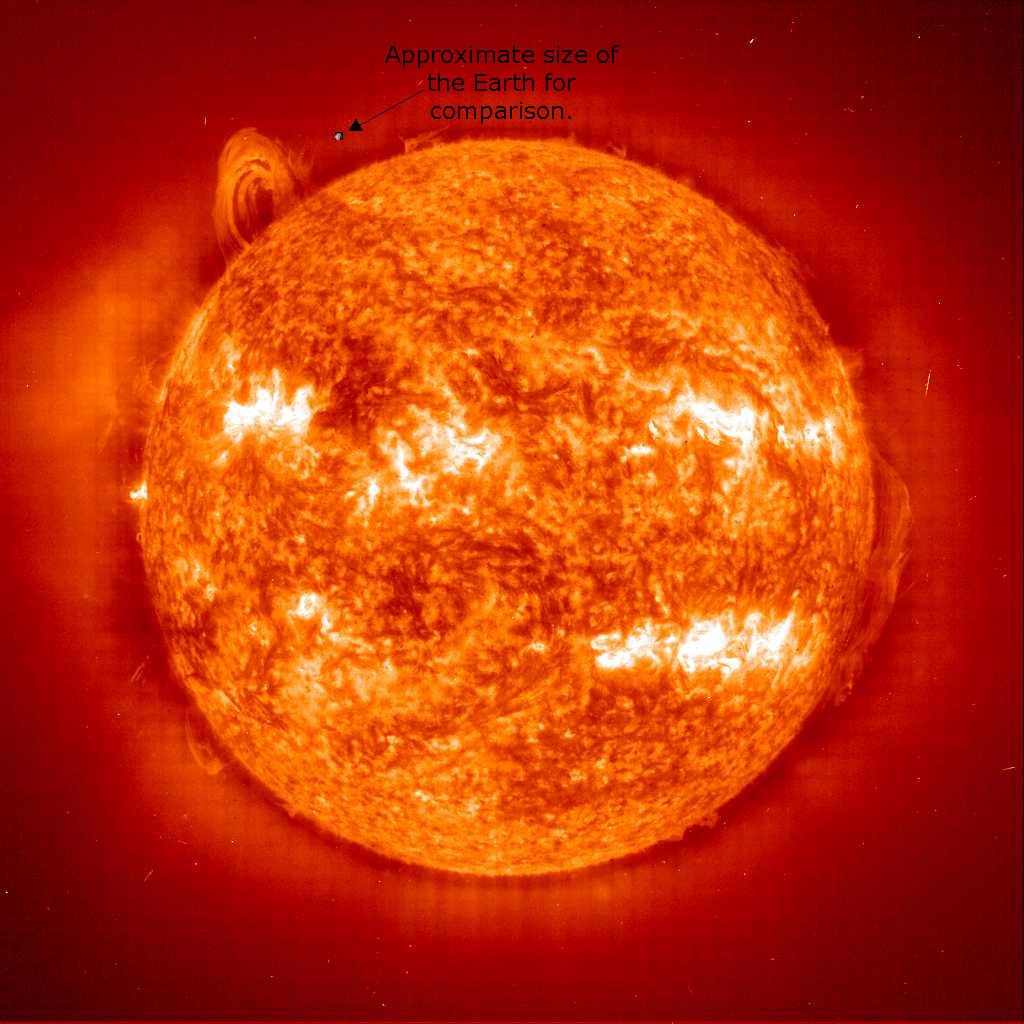The Sun - Next Planet - Back to Planet Walk
- Next Planet - Back to Planet Walk
Photos Courtesy NASA
The Sun, at the center of our Solar System, is at
the beginning of this scale model of the Solar System. In this model, the
Sun is represented as a ball 4 inches in diameter. This makes the scale
of our model 1 inch = 180,000 miles. Each step that you take (28 inches)
is then 5.0 million miles.
Our Sun is a huge, massive, spherically shaped object,
containing about 99.8% of all the matter in our Solar System. (The planet
Jupiter contains most of the remaining material.) The sun has a mass of
1.9891x1030 kg = 4.384x1030 lb = 2.192x1027
tons, or a mass 333,000 times that of the Earth. The radius of the Sun
is 696,265,000 meters = 696,265 km = 432,639 mi or a radius 109 times
that of the Earth. The volume of the Sun is so huge that it could hold
over 1 million Earths.
The Sun is a typical star, and is also the star that
is nearest to the Earth. It is composed of a mixture of 73% hydrogen, 25%
helium, and 2% other elements by weight. The nuclear fusion reactions that
produce the sun's energy are converting hydrogen into helium, changing
the relative amount of these two elements present in the Sun. In each nuclear
conversion 4 hydrogen atoms are combined to produce a helium atom. This
reaction occurs throughout the Sun and by this process our Sun converts
600 million tons of hydrogen into 596 million tons of helium every second.
The missing 4 million tons of matter are converted to energy, according
to Einstein's equation E=mc2. This amount of energy is
so large that the Sun gives off 40,000 watts of light from every square
inch of its surface. (Compare this to the 60 and 100 watt light bulbs we
use in our homes.) As far as we know, the Sun has been giving off this
energy steadily for the last four and one half billion years, and will
continue to do so for several billion years more. Only half a billionth
of this energy reaches the Earth. The rest is radiated out into space.

This and all photos in this web site are courtesy NASA.
